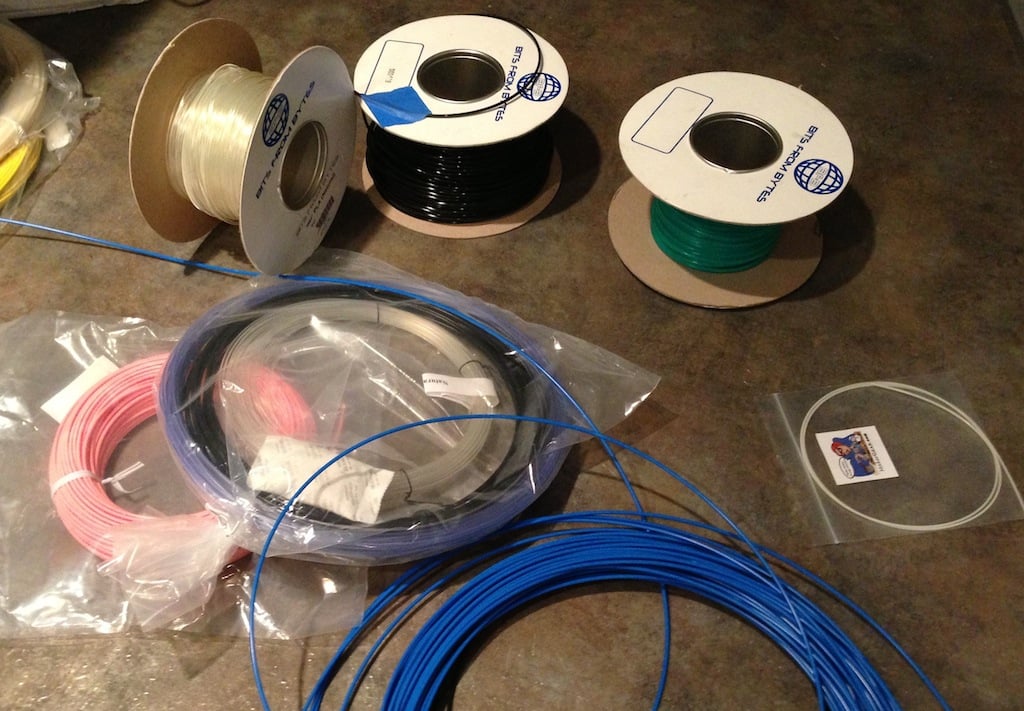
Buying some 3D printer filament? Did you check anything other than the price and color first? Maybe there’s more you should look at.
The number of sources of 3D printer filament today is seemingly limitless; there’s not a week that passes by when I don’t see yet another outlet selling standard or exotic 3D print materials. In the web pages of these vendors you can explore a wide variety of products, but I believe there’s often a lack of suitable product specifications.
In many cases there are only three specifications to a given spool of filament:
- Plastic type, usually ABS or PLA
- Spool size, usually weight, but occasionally length of filament
- Color, almost always a non descriptive word like “Blue”
In some cases you might also get a quality spec such as “diameter tolerance within 0.5mm”, meaning the maximum variance from the intended filament diameter.
I don’t think that’s sufficient, as you cannot make proper decisions about the filament. I think it’s time to insist on a more comprehensive set of specifications with which you could more accurately compare two different filament options.
But what might an expanded set of specifications include on labeling for future 3D print filaments? Here are some ideas:
Color: “Blue” from one vendor is almost certainly not the same as “Blue” from another vendor. In fact, “Blue” from the SAME vendor is often not the same. It would be useful to have a specific color specification with which one could match colors between vendors, for example. However, using such a specification would require some vendors to actually care about color consistency! I’d like “PANTONE 15-5519 Turquoise”, please.
Transparency: Some filaments are marketed as “clear” or “natural”, but are they really so? How much light actually transfers through the material? Again, this would encourage consistency.
Strength: In the past the mechanical properties of a 3D print material were easy to identify: it was either plain old ABS or PLA. Nowadays, however, there is an increasing mix of unique materials that offer a variety of mechanical properties
Temperatures: The usage temperatures of 3D printer filament vary somewhat and often it’s a struggle to identify the optimum temperature of a plastic, even though it is supposedly PLA or ABS. In reality there are additives and impurities that could shift the temperatures slightly. What is the operating temperature window specification for this filament? I say “window” because some materials have a wider range of operating temperatures than others. This is important to know, as the wider the range, the easier to print.
Volume: What is the physical volume of plastic being purchased? When all materials have the same densities, this isn’t an issue, but with the introduction of composite filaments that have embedded metals, like iron, for example, you’re buying a lot less filament when you get a 1kg spool. How much material is really on the spool? Sure, you could get this by computing via the density, but why not just say what it is.
Toxic Ingredients: Most 3D printer filaments contain additives, if only for coloration. But some have additional materials mixed in to permit a bit of flexibility, some added strength or other properties. Are any of the additives toxic? What are they? How much is present? Is there an MSDS for this material?
What did I miss?
For all of these there are engineering metrics that could be used, but for some reason, likely the ability to save costs via inconsistency, many manufacturers do not publish them. I would really like to see a standard labeling system that manufacturers adhere to for all their 3D printing filament products.

